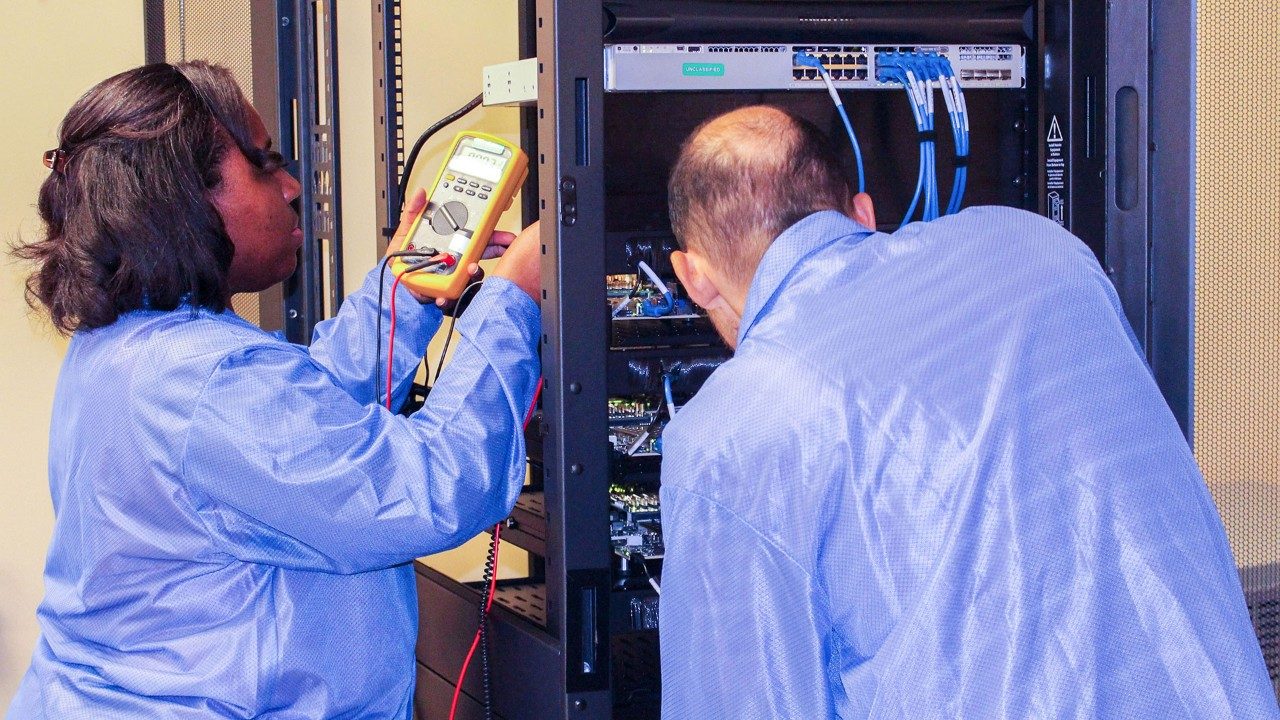Continuous Delivery: Producing Code For the Nation’s Next Missile Defense Interceptor
How Lockheed Martin’s Next Generation Interceptor Program Enables Mission-Driven Transformation

Our customers need software that moves just as fast as their ever-changing missions. So, what is a software factory and how is it helping Lockheed Martin meet their needs?
Lockheed Martin’s NGI Software Factory automates software activities, enabling fast development and continuous deployment of software to advance customer missions. The factory utilizes people, processes, and tools to move ideas and requirements to high quality products at the speed of relevance, while reducing costs.
At the core of the software factory is the home-grown DevSecOps model – the integration of Development, Security and Operations – which ensures a fully integrated software product at the beginning of development. And it’s already an important part of Lockheed Martin’s NGI program.
“Our engineering team delivered robust capability to our customer over a month early using Lockheed Martin’s NGI Software Factory,” said Sarah Reeves, vice president of NGI at Lockheed Martin, of the recent software delivery milestone. “The software factory is already enhancing reliability and allowing for faster development time as we now provide software updates to our customer continually.”
Since the first software release milestone, Lockheed Martin completed additional software achievements including demonstration and delivery of our DevSecOps compliant software factory instantiation – essentially, the blueprint of the company’s NGI software product-- and a Software Minimum Viable Product (MVP) demonstration through our software factory. This demo proved the company’s NGI Software Factory can continuously produce reliable software. Lockheed Martin’s NGI program marked the first time an MDA program has accomplished both of these milestones. The Lockheed Martin team also demonstrated continuous delivery of software, through the NGI Software Factory, to the MDA.
The NGI Software Factory provides value to Lockheed Martin’s customer in several ways, including high reliability through continuous automated testing, and secure and efficient software activities. This allows customers to review and collaborate with us throughout the development process.
“It’s like building a house, you need a good foundation. This software factory serves as the core structure that enables the NGI program to deliver software rapidly and we’ll continue to mature it throughout development,” said Whitley Poyser, director of digital program management. “Our factory is already delivering world-class software, improving as we build upon our foundation and setting our program up for continued success.”
Lockheed Martin NGI is Digital from Day 1

Lockheed Martin’s NGI program has been digital since the beginning. This enables the team to solve problems and develop solutions more quickly, affordably and efficiently.
“We are leveraging data as a strategic asset, enabling the warfighter and mission operators to accelerate situational awareness, more accurately characterize challenges and prescribe appropriate courses of action to achieve mission objectives,” said Poyser.
A prime example of this is digital twins, which are digital fingerprints of each missile with as-designed and as-built data. The data gathered within the new Lockheed Martin Missile System Integration Lab (MSIL) will help to anchor the NGI program’s early digital twins prior to flight testing.
“These digital twins will give us critical data that’s unique to each missile, its components, and its testing to assure we understand each missile. By utilizing digital twins, we can model performance and understand the NGI fleet’s readiness for the warfighter,” Poyser explained.
Lockheed Martin’s NGI program was born digital and as the program grows, the company’s team continues to embrace continuous software delivery, agile program execution, open architectures, augmented and virtual reality.
Lockheed Martin is Enabling Mission-Driven Transformation
Flight software is critical for a Lockheed Martin NGI to do its mission in defense of the homeland. This software flies the vehicle, controls the intercept mechanics, and determines how the interceptor will engage the threat.
The work doesn’t stop for the Lockheed Martin software team after the first release of flight software. The team is continuing its iterative process to add additional capability as the program and code matures through the software factory.
“Our software team is now building off of the tremendous Release 0 milestone, adding additional functionality and using metrics from the software factory for continuous development and to increase productivity,” said Poyser.
The team is also leveraging Lockheed Martin’s corporate Software Factory resources.
“Today’s missions operate on timelines of days and weeks, not months and years. Lockheed Martin’s Software Factory delivers next-generation software solutions in a rapidly-evolving DevSecOps environment to ensure our customers stay ahead of ready for the 21st century missions of today and tomorrow. These solutions bring software capabilities to an elevated secure realm, from buildout to testing to operations,” said Yvonne Hodge, senior vice president of Enterprise Business & Digital Transformation and chief information officer at Lockheed Martin.




